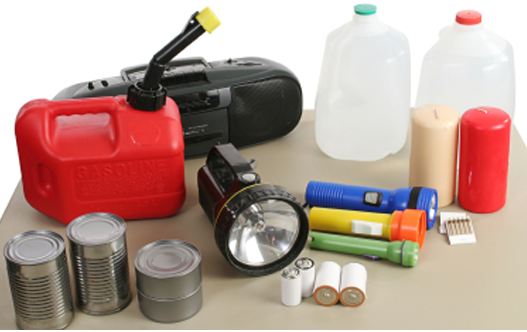11 months ago
·
by
Erin Carlson ·
0 comments
 Summertime fun often includes swimming in the pool. Whether you already have a pool in your backyard or are thinking about putting one in this year, you may wonder if your home insurance will cover your pool.
Summertime fun often includes swimming in the pool. Whether you already have a pool in your backyard or are thinking about putting one in this year, you may wonder if your home insurance will cover your pool.
Personal Liability Coverage
If someone is injured while swimming in your pool, the personal liability coverage on your homeowners insurance policy will pay for it. Update this coverage amount when you install your pool to ensure it’s sufficient.
Related Structure Coverage
Your insurance company may classify your new in-ground pool as a related structure, similar to a storage shed or detached garage. Increase the related structure coverage on your homeowners insurance policy to cover damage to your pool. Keep in mind that this coverage won’t pay for pool maintenance.
Geography Matters
Find the majority of backyard pools in warm climates. Based on this fact, insurance costs for your pool may be cheaper if you live in the warmer southern states and more expensive if you live in cooler northern states.
Erect a Fence
To prevent accidents in the pool, many insurance companies stipulate that you surround your pool with a fence that includes a self-latching gate. Consider whether or not you have the space and ability to erect a fence before you install a pool.
Consider the Diving Board or Slide
Some insurance companies won’t cover accidents that happen on the diving board or slide. That policy will influence whether or not you install one of those pool accessories.
Consider an Umbrella Policy
Even if your homeowners insurance policy covers your pool, consider an umbrella policy. It provides extra coverage after your homeowners insurance limits are met. The extra protection gives you peace of mind if you need to file any pool-related claims.
A backyard pool provides hours of fun every summer. Before you install one, though, talk to your insurance agent. Get all the facts.
Read more
11 months ago
·
by
Erin Carlson ·
0 comments
 Millions of Americans take to the water each year during boating season, traveling the coastlines, rivers, lakes and canals. The watercraft range from simple rowboats to jet skis to small motorboats to luxury yachts. Boat owners spend significant amounts of money buying and maintaining their boats.
Millions of Americans take to the water each year during boating season, traveling the coastlines, rivers, lakes and canals. The watercraft range from simple rowboats to jet skis to small motorboats to luxury yachts. Boat owners spend significant amounts of money buying and maintaining their boats.
The need for insurance protection when the boat is on the water is obvious, but many boat owners question the need for it during the off-season. However, insurance is just as important when the boat is in storage as when the owner is using it.
A typical Boat insurance policy provides a package of coverages, including:
- Damage to the boat, motor, and trailer
- Damage to portable property used in the maintenance and operation of the boat, including things like anchors, life jackets, oars, tools, skis and surfboards, lights, and fire extinguishers
- Damage to other types of property, including sports equipment, clothing, and other personal effects
- Damage to equipment on shore, such as boat covers
- The cost of recovering a sunk or stranded boat
- The cost of emergency service and towing
- Damage to non-owned or substitute boats
- Loss of fishing tackle
- Liability coverage for injuries or damages for which the boat owner is legally responsible
- Coverage for injuries the boat owner or others on the boat suffer in an accident with an uninsured watercraft
A boat owner will need these coverages if their boat gets into a collision with another boat, or if thieves steal scuba gear from it, or if fire damages the motor. However, losses are still possible while the boat is out of the water. Progressive Insurance reports that nearly two out of every 10 boat claims it receives from northern states occur between Labor Day and Memorial Day, when most owners are not using their boats much.
Some examples of losses that could occur:
- The building which houses the boat during the winter burns to the ground.
- Vandals damage the boat in the middle of the night while it’s in the owner’s driveway.
- A neighbor’s child, playing in the owner’s yard, runs into the boat stored there and injures his head.
- Someone steals the boat and its trailer from the yard at a repair shop.
- While the boat is stored in the yard, heavy snow melt causes a flash flood that damages the boat’s interior, including the mechanical system and the radio.
Some insurance companies offer “disappearing deductibles,” where the deductibles for collision and damage losses from other causes decrease by a certain amount for every claim-free year. Those companies will grant this benefit only to boat owners who keep their insurance continuously in force with them.
One of our insurance agents can provide advice on the types and amounts of coverage a boat owner needs. We can also recommend insurance companies that have expertise in boating, good claims-paying practices, and reasonable prices. Insuring a boat all year round can be expensive, but compared to the cost of a large uninsured loss, it may well be worth the cost.
Read more
 Heavy rains, floods, hurricanes can all threaten your home and family this spring. While no amount of preparation prevents volatile spring weather, a home emergency kit helps you prepare to be safe and survive.
Heavy rains, floods, hurricanes can all threaten your home and family this spring. While no amount of preparation prevents volatile spring weather, a home emergency kit helps you prepare to be safe and survive.
Survival Essentials
A warm blanket, spare set of clothes and matches could make the difference in your survival. Pack these and all other essential supplies you might need in an airtight container that’s easily accessible.
Food and Water
The Red Cross suggests families store two weeks’ worth of food and water, which means you’ll need one gallon of water per person per day and a variety of easily prepared, non-perishable foods. Don’t forget to stock baby and pet food if necessary, too.
First Aid
Minor bumps and bruises can occur as your family rushes to safety. Your first aid kit should include basic first aid supplies like bandages, antibacterial cream, burn cream and pain reliever. Pack prescription medications, hearing aid batteries and other specialized medications if needed.
Hygiene Items
Toilet paper, toothbrushes and diapers are essential. Hand sanitizer and bleach should also be included in your emergency kit.
Stay Connected
You’ll want to stay connected to the outside world and signal for help, so include a battery-powered radio, extra batteries, your cell phone and chargers in your emergency kit. A flashlight and whistle for each person is also a good idea.
Tools
Whether you have to dig out of the basement or open a soup can, tools come in handy. Stock a multipurpose tool, work gloves, scissors, shovel, screwdriver set, hammer and manual can opener in your kit.
Important Papers
In the rush of an evacuation, you may forget to grab your purse or wallet. Copy important papers like your driver’s license, birth certificate, insurance policies and medical information. Store them, extra cash and your family’s emergency contact information in a waterproof bag to keep them safe.
This home emergency kit will play a big role in keeping you safe when volatile spring weather strikes. Update your insurance policies, too, as you stay protected and prepared.
Read more

When shopping for health insurance, you probably noticed that different plans feature different deductibles. Understand what your health insurance deductible is as you maximize your health insurance coverage.
What Is a Health Insurance Deductible?
In basic terms, a deductible is the fixed amount you must pay toward your medical bills before your insurance coverage kicks in and begins to pay your expenses in full. Your specific deductible can be as low as $250 or as high as several thousand dollars and starts over again at zero on January 1 of each year.
How Does the Deductible Work?
Here is an example of how your deductible works using a $1,000 deductible amount.
- In February, you get the flu. You pay $200, the full amount, for the doctor visit and medication. Your deductible balance now totals $800.
- In May, you sprain your ankle. You total costs are $500 for the doctor visit, x-rays and brace. Your deductible balance is now $300.
- In August, you need a physical. You pay $300 for the doctor visit and blood work. Your deductible is now met. Any further doctor visits or health care needs that are covered by your insurance will be paid 100 percent.
What are the Different Types of Deductibles?
You can check your health insurance benefits package to see exactly what deductibles you may need to pay. Some common types include:
- Annual: It’s the amount of money you’ll pay annually from January 1 to December 31.
- Per Episode: Your deductible may vary based on the type of medical care you need. As an example, doctor visits may include a $25 deductible while hospital visits require a $1,000 deductible.
- Out-Of-Network: Visit a doctor, specialist or hospital that’s not in your network, and you’ll pay higher deductibles.
- Family: If you have family coverage, your deductible may be higher than the amount paid by individuals. When your family deductible is met, your insurance will pay your health care costs.
When Won’t You Pay a Deductible?
Some insurance plans allow you to receive three types of services and not pay a deductible. They include visits to an in-network doctor for preventative care, yearly screenings or your annual flu shot. Check your benefits package to verify that you won’t owe a deductible for these services.
What Services Don’t Count Toward the Deductible?
Even though you haven’t met your deductible, there are some health services you may need or want that don’t count toward meeting your deductible. These services are the ones your insurance won’t pay. Check your policy or call your agent for clarifications.
Your health insurance deductible is an important part of your medical care. Understand it as you maximize your health care coverage and take care of your health.
Read more
 Are you planning to welcome trick or treaters to your home this month? Here are some suggestions to prepare your property for safe Halloween fun.
Are you planning to welcome trick or treaters to your home this month? Here are some suggestions to prepare your property for safe Halloween fun.
1. Clean your walkways.
Jack-o-lanterns are cute, but they are also tripping hazards. Remove decorations and all clutter or debris such as toys, yard tools or twigs from your sidewalks, steps and walkways.
2. Clear the yard.
Ideally, kids will stay on the walkway and front porch as they retrieve their candy. However, you will want to clear your yard so curious and excited kids don’t trip on any toys, branches or yard tools.
3. Repair broken sidewalks and steps.
Inspect your entryway and steps carefully. Then repair any broken stepping stones, loose railings or other hazards.
4. Install lighting.
Your front porch light is turned on to welcome trick or treaters, but you may also need additional lighting to ensure safety. Solar-powered walkway lights or a string of lights can illuminate your walkway and porch.
5. Change your location.
Instead of making kids walk up your long driveway or steep steps, stand or sit in a location that’s easy for them to access.
6. Lock doors and windows.
On trick or treat night, your attention is focused on your front door. Lock all the other doors and windows in your house so no one can gain access to your home while you’re out front. Remember to lock your garage and car, too.
7. Secure valuables.
Move your grill, mower and other valuables to the shed or another secure location. With this tip, you prevent potential burglars from adding your home to their future target list.
8. Protect your pets.
Some kids are scared of animals. Also, pets can become startled and bolt or bite when they see strange costumes or dozens of noisy kids. Always secure your pets so they and the kids are safe.
9. Extinguish candles.
Open flames pose a fire hazard. As an alternative, try battery-powered bulbs, or install Halloween-themed covers on your flashlights.
10. Consider allergies when choosing candy.
Many kids are allergic to nuts or dairy. Place a teal pumpkin on your step to show trick or treaters that you offer safe alternatives like books, stickers or toys.
11. Update your property and homeowners’ insurance policies.
Despite your best efforts to promote safety, someone could be injured while on your property (ask about Personal Umbrella Insurance – a surprising low annual cost for protection). Be sure your property and homeowners’ insurance policies are updated and include adequate coverage.
Trick or treating is a fun family activity. As you give out treats this year, follow these safety tips. They secure your property and reduce your liability risks.
Read more
 October, Adopt a Shelter Dog month, is a great time to add a dog to your family. Be careful which breed you adopt, though. Insurance companies use data from insurance claims and public health studies to create a high risk dog breed list, and your homeowners insurance premiums can increase based on the type of dog you adopt. You can save money when you choose a dog that’s not on the high risk list.
October, Adopt a Shelter Dog month, is a great time to add a dog to your family. Be careful which breed you adopt, though. Insurance companies use data from insurance claims and public health studies to create a high risk dog breed list, and your homeowners insurance premiums can increase based on the type of dog you adopt. You can save money when you choose a dog that’s not on the high risk list.
Working Breed Dogs
Agile, powerful and intelligent, Akitas, Alaskan Malamutes, Doberman Pinschers, Rottweilers and Siberian Huskies are also fiercely protective. If they’re not trained properly, these breeds could be potentially dangerous, especially to young children and small pets.
Terrier Breeds
Loyal and protective, American Pitbull Terriers and American Staffordshire Terriers have been bred to hunt. These traits mean they can become aggressive and tenacious if they’re cornered or frightened by one of your family members or guests.
German Shepherds
Police departments, military personnel and ranch hands appreciate this breed because the dogs are intelligent, hard-working and powerful. They’re also suspicious of strangers and won’t back down, which makes them a challenging breed for inexperienced owners to handle.
Chow Chows
Independent and strong Chow Chows are often kept as companions. These fluffy dogs can be aloof and stubborn, though, and should only be adopted by experienced dog owners.
Miscellaneous Breeds
Wolf Hybrid and Presa Canarios dogs exhibit strength and protective characteristics. However, they can also be unpredictable and quick to attack, making them potentially dangerous breeds. Friendly and docile Great Danes are listed on the high risk list, too, because of their size.
A dog adds fun and companionship to your home and family, and adopting a shelter dog is socially responsible. Before you choose a new pet, though, consider whether or not it will increase your homeowners insurance cost. If so, you may choose a different breed or reduce your home insurance premiums by installing a dog fence or raising your deductible.
Read more
 Summertime fun often includes swimming in the pool. Whether you already have a pool in your backyard or are thinking about putting one in this year, you may wonder if your home insurance will cover your pool.
Summertime fun often includes swimming in the pool. Whether you already have a pool in your backyard or are thinking about putting one in this year, you may wonder if your home insurance will cover your pool.
 Millions of Americans take to the water each year during boating season, traveling the coastlines, rivers, lakes and canals. The watercraft range from simple rowboats to jet skis to small motorboats to luxury yachts. Boat owners spend significant amounts of money buying and maintaining their boats.
Millions of Americans take to the water each year during boating season, traveling the coastlines, rivers, lakes and canals. The watercraft range from simple rowboats to jet skis to small motorboats to luxury yachts. Boat owners spend significant amounts of money buying and maintaining their boats. Heavy rains, floods, hurricanes can all threaten your home and family this spring. While no amount of preparation prevents volatile spring weather, a home emergency kit helps you prepare to be safe and survive.
Heavy rains, floods, hurricanes can all threaten your home and family this spring. While no amount of preparation prevents volatile spring weather, a home emergency kit helps you prepare to be safe and survive.
 Are you planning to welcome trick or treaters to your home this month? Here are some suggestions to prepare your property for safe Halloween fun.
Are you planning to welcome trick or treaters to your home this month? Here are some suggestions to prepare your property for safe Halloween fun. October, Adopt a Shelter Dog month, is a great time to add a dog to your family. Be careful which breed you adopt, though. Insurance companies use data from insurance claims and public health studies to create a high risk dog breed list, and your homeowners insurance premiums can increase based on the type of dog you adopt. You can save money when you choose a dog that’s not on the high risk list.
October, Adopt a Shelter Dog month, is a great time to add a dog to your family. Be careful which breed you adopt, though. Insurance companies use data from insurance claims and public health studies to create a high risk dog breed list, and your homeowners insurance premiums can increase based on the type of dog you adopt. You can save money when you choose a dog that’s not on the high risk list.